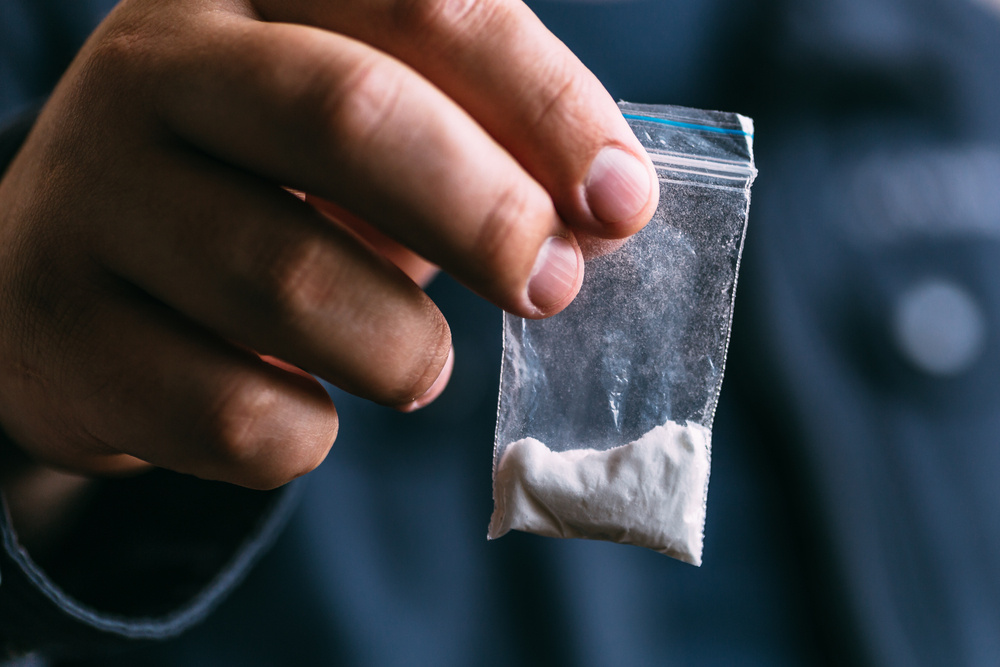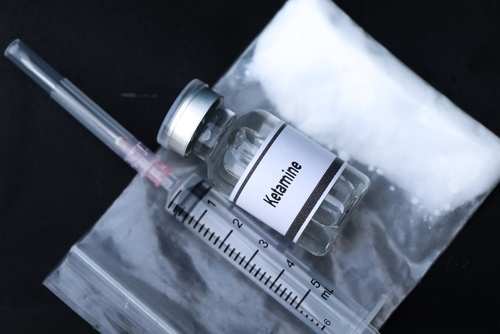Ketamine is a dissociative psychedelic drug which was originally developed in the 1960s. Its original purpose was as a surgical anesthetic, and saw extensive use during the Vietnam War. To this day, it's still occasionally used in that role, and is also a common anesthetic in veterinary procedures. In addition, it is a known anti-depressant, and may be prescribed by doctors for that purpose.
However, today ketamine is much better-known as a recreational drug, sometimes going under the names "Special K" or "Kit-Kat." Many believe it to be beneficial, but reports are mixed.
So in this article, we'll be looking at the effects, dangers, and potential benefits of ketamine and its infamous "k-hole."
What Is A K-Hole?
A k-hole (sometimes also spelled "khole" or "k hole") is the effect that large doses of ketamine bring to its user.
As a dissociative drug, ketamine causes a sort of out-of-body experience where the user's consciousness feels detached from their physical body. The sensation is described as floaty, or like melting into their environment. Some people find it euphoric or a feeling of timelessness, and visual or auditory hallucinations may also happen.
However, a true k-hole is when the user takes enough ketamine that even moving or speaking becomes difficult, or impossible. A person stuck in a k-hole is basically immobile, going on their own private trip while almost entirely cut off from their body. This is why it's described as a hole: the effect can be as if the user's consciousness is at the bottom of a deep hole, like a well.
Whether someone enjoys this or not is largely a matter of personal preference or their psychology. Some people like being cut off from their bodies, others find the experience terrifying or traumatic.
How Long Does A K-Hole Last?
The length of a ketamine experience depends on both how the ketamine is taken, and how much is taken.
Ketamine can be inhaled, injected, or eaten. If injected, the effects begin almost immediately. When inhaled, it takes 5-15 minutes to kick in, and around half an hour if eaten.
For a typical dose, the experience will probably last around an hour. However, the more that is taken, the longer it lasts. With a particularly large dose, the user may mostly 'come down' after 2-3 hours, but it could still cause changes in the user's senses or perception of time for up to 24 hours afterward.
Risks Associated With Ketamine Use
Ketamine could be considered 'mid-tier' in terms of risks. It's definitely not as safe as some other options, such as LSD or marijuana, but can generally be used safely as long as the user understands the drug.
Legality
First, we must emphasize that ketamine is a controlled substance, and private use is illegal in many places. There are allowances for medical use, but those must be done under medical supervision from an authorized distributor.
Physical Risks
Ketamine slows breathing, and in high enough doses, it could potentially slow breathing to a dangerous level.
In high doses, nausea and vomiting are also common. This can also be extremely dangerous, as it's possible for a k-holed person to accidentally choke on or aspirate their own vomit. Users often refrain from eating for a few hours before taking ketamine, to reduce the risks here.
Among long-term users, there may be further risks. Both the liver and kidney can be damaged by excessive ketamine use, and failures of either organ have been seen in users.
As mentioned above, some people find the ketamine experience terrifying, and may become violent if they react too badly against the drug. This is rare but can happen.
In general, ketamine should be used with a sober minder around, because a k-holed user will not be able to react appropriately to danger or medical issues.
Overdose and Addiction
Overdose is absolutely possible with ketamine, and people have died from ODing. Someone experimenting with ketamine should always start with low doses.
In addition, ketamine can be habit-forming and is considered addictive. Withdrawal from a ketamine addiction can be extremely unpleasant, although it is rarely fatal.
Benefits of Ketamine
Aside from its use as a surgical anesthetic, Ketamine is recognized as an anti-depressant. An inhaled version of the drug called Spravato has even been approved by the FDA as an option for treatment-resistant depression (TRD). When used as an anti-depressant, it is done in a clinical setting, with a psychiatrist helping guide the patient through the trip and recovery.
This does make ketamine a popular choice for people exploring alternative treatments for psychological issues. However, taking ketamine alone without a helper is still a bad idea.
Ketamine can also be microdosed, bringing about mild feelings of euphoria and peacefulness, without the debilitating effects of a k-hole. This is a relatively common option for people searching for alternative treatments for issues such as depression or eating disorders.
Unfortunately, current scientific research into microdosing ketamine is absolutely minimal. A 2021 Frontiers in Pharmacology study on rodents found that small doses of ketamine did seem to improve their motivation and attention span. In addition, another non-human test reported in the Journal of Neurochemistry also suggested microdosing can bring about positive behavioral changes.
As of writing in 2024, there do not seem to be any published studies on microdosing ketamine in humans. As such, any claims about its psychological benefits should be taken with some skepticism. The placebo effect is strong with microdosing, and its benefits cannot be confirmed without proper placebo-controlled human studies.
Is Ketamine Valid Therapy?
Ketamine has well-documented antidepressive properties, and is coming to be respected as an option for treatment-resistant depression in clinical settings. If you are interested in ketamine for TRD or similar conditions, we recommend seeking out a psychiatrist willing to provide it.
Home experimentation is more dangerous, and microdosing currently has no hard science behind it. While many people do successfully use ketamine without problems, there are real dangers to consider.
As always, do your research and consider the risks before experimenting with any illegal substances.



